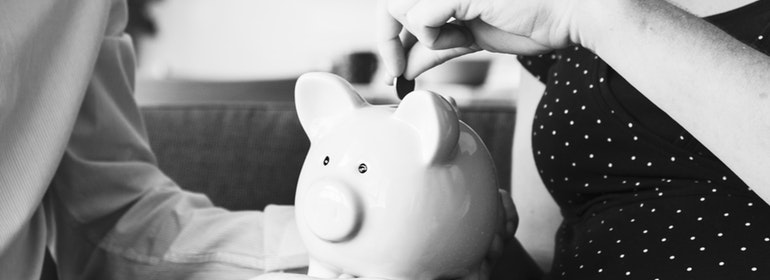There is a lot of good financial advice out there which goes something like this: ‘you know that money you don’t use every month? Well, take R50,000 and invest it in X now, and you’’ be happy later.’
Sound familiar?
The problem with this advice is that it’s incredibly alienating for the other 92 percent of people out there who a) don’t have money left over at the end of the month and b) would laugh and rub their hands with glee like Scrooge if 50,000 unaccounted-for rands came calling. That’s not real life, for the average Joe. So, where does one find financial advice for people without the silver spoon?
This blog post is for you. It’s about a term which may well answer many of your problems: microsaving.
What is microsaving?
Just like the name says, this is putting small bits of money aside. Think of it as the digital equivalent of what your grandparents did with a kitty back in the day, dropping spare coins regularly.
Microsaving is about taking whatever amount of money is small and unnoticeable to you and tucking that away in a place you can’t spend it. So, for instance, you buy a weekly wrap at work that costs R35 and so your microsaving method of choice squirrels away the R5 into a savings pocket, separate account or another wealth preservation vehicle like your RA. If you know that you regularly come out at the end of the month with about R900 aside for your daughter’s ballet things, which often comes to R800 actually, microsavings pockets that extra hundred.
These are by no means big amounts and – caution – no microsaving tool will get you the returns that investing R50,000 in a reputable vehicle would, but they are certainly better than not using microsavings. Here’s why.
Mindfulness matters
For most of the people that can’t afford to save or invest traditionally, it’s not entirely true that they don’t have one single spare cent unaccounted for each month. It’s more a mindfulness issue. Money coming in like salaries are given vague budgets at the beginning of the month and then, like a black hole, it juts vanishes into a million little things and unforeseen expenses. Do you have an emergency fund each month? Do you estimate and account for how much you spend tipping car guards and paying for parking? And because savings and investing are often the last in line, the if-I-have-enough amounts, by the time their turn rolls around there is no money to save or invest.
A microsaving app, banking feature or some other investment vehicle (Liberty’s Stash and FNB’s Bank Your Change are quite good) takes into account this lack of mindfulness by taking off that R5 from the wrap, R100 from the ballet recitals money, knowing you won’t notice. And then you have something like R400 at the end of each month saved away – certainly not the R2000 you were hoping to save, but better than the zero you were headed for.
From microsaving to microinvesting
Of course, it’s not just saving that this approach is good for. Instead of sending your loose change into a savings pocket, what about into an investment vehicle? Or your retirement fund? Or the trust you as a couple set up for the kids’ university fund? The possibilities are endless and, especially when coupled with intentional saving and investment of larger sums, microinvesting can be powerful.
Sometimes it pays big to go small…

